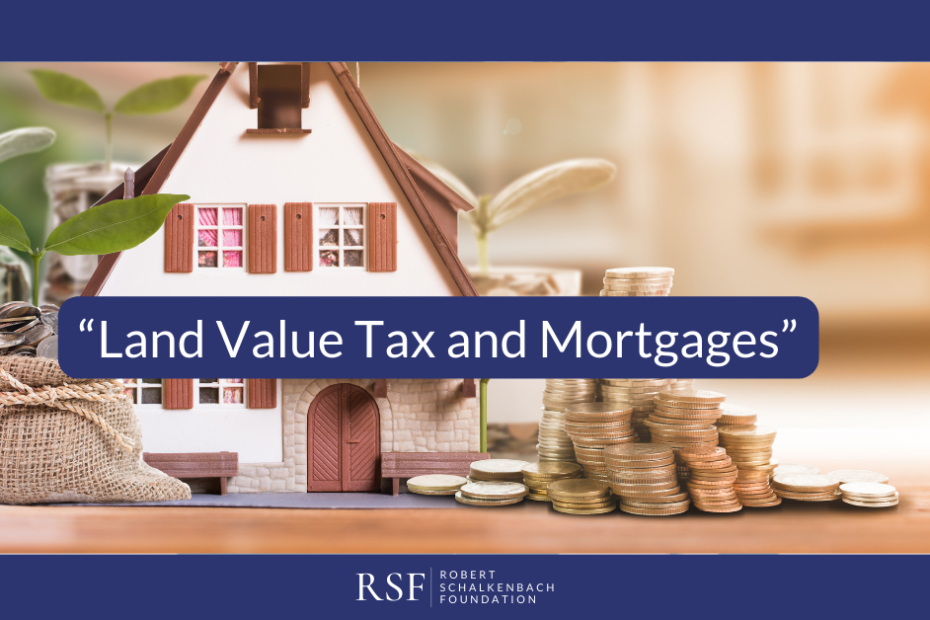It’s a tough time to be a home buyer in today’s housing market. Housing shortages continue, and interest rates on mortgages are about double what they were two years ago. In June 2024, the average was 6.95% for a 30-year fixed mortgage and 6.17% for a 15-year — up from 3.22% and 2.34% respectively in January 2022. First-time home buyers have it particularly difficult, with percentage rates well below average, according to the National Association of Realtors (NAR). As Jessica Lautz, deputy chief economist and vice president of research for the NAR put it, “They’re finding it difficult to enter the homebuying market, with limited affordable housing inventory and higher interest rates.”
This is where a Land Value Tax (LVT) can help, says Frank de Jong, board member of the Robert Schalkenbach Foundation. Not only can an LVT address the issue of available housing stock — increasing options for home buyers and motivating movement within it — but also lowering the costs of mortgages overall while increasing accessibility. Here’s how.
Lower cost mortgages
Right now, when you want a mortgage, you’re taking one for the value of the land and property together. However, a land value tax would remove the land portion and require the mortgage to only cover the building on it. That alone can lower the cost of a mortgage by about 50%, de Jong says. Instead of the mortgage — and property taxes — you’re just paying a flat fee every month, just as you pay your municipal taxes once a month or so.
“After LVT is fully phased in, you don’t have to go to the bank at all for the land component of your purchase, you just have to go to the bank for the building component of your purchase, because that’s got nothing to do with land value taxation,” he explains.
Reduced downpayment and land transfer taxes
With the land element removed from the mortgage, the overall amount to borrow lowers along with the downpayment typically expected. In 2023, the median rate was 15%, according to the National Association of Realtors. While the percentage might not change, the amount it’s applied to would, lowering the downpayment significantly.
Homeowners would also be rescued from paying the land transfer tax, largely between .1% and about 1.5% of the value of the property — land and buildings together in the 38 states that currently charge one. Under a land value tax, the land is controlled by the government so no land transfer tax is necessary, saving the homebuyer no small amount of money.
Increased housing stock
One of the main arguments behind implementing a land value tax is that it will stimulate the development of property. Not only will a higher tax on land encourage owners of vacant lots — especially in cities — to either develop the land or sell to those who will, increasing housing stock that way. The higher tax on land will also encourage developers to pack more housing blocks on a single piece of land, again increasing housing options.
As de Jong explains, “it incentivizes more housing on less land, reducing sprawl and the cost of municipal services like sewers, fire and police. more efficient land use will result in the higher quality of life that everyone loves about European walkable communities.”
Make downsizing and upsizing painless
One aspect of the housing market that keeps home owners from downsizing are the collateral costs of moving. This is especially painful to those who’ve paid off their homes and live in them relatively cheaply, paying just the property taxes. Under an LVT, de Jong points out, downsizing is as easy as switching your LVT from one house to another, and then you just move there. The smaller mortgage on the building only helps ease the decision, too.
The idea works in the other direction, too, according to de Jong. “Growing families often need a bigger house. Under LVT, you just take over the land value tax of the bigger building, and you won’t have to go to the bank for a bigger mortgage — and if the lot has a similar value, your LVT payments will not rise.”
Land Value Tax in spirit — if not law
While land value tax struggles to become law in states and municipalities — such as Detroit, where a concerted effort by Mayor Duggan appears stalled — elements of a land value tax are in place. Land trusts are a great example as they remove the land portion of the purchase. The Boston Neighborhood Community Land Trust offers a great example. “A buyer of an affordable home purchases the building, but not the land beneath, helping to keep the price low,” the trust explains. “Community ownership, control, and governance set CLT properties apart from traditional models of affordable housing.”
For Georgists, land trusts also seem more achievable than endless debate at the governmental level. “A lot of Georgists are so frustrated with the process of lobbying towards LVT,” De Jong notes. “They say, ‘Oh, screw LVT. Let’s just support land trusts,’ because of the strong interest already in this existing mechanism in governments to de-commodify land.”
Land trusts improve housing affordability but deny banks of the mortgage interest revenue for the land portion of properties. so, as De Jong emphasizes, “If you sympathize with banks, you won’t favor LVT.”

